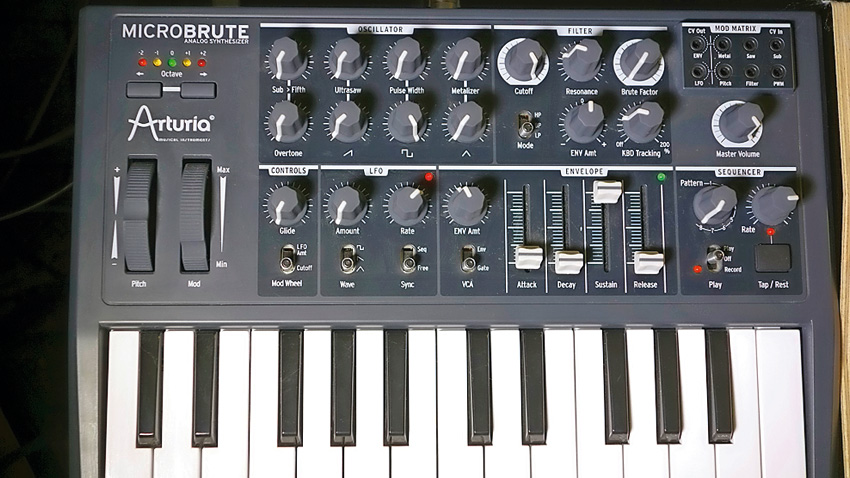How to use the Arturia MicroBrute's mod matrix
Arturia's diminutive synth is surprisingly capable when it comes to modulation

In the world of mono synths, CV/Gate interfacing can still hold its own - and unencumbered by issues of polyphony. It's also now relatively cheap to provide some form of CV-MIDI conversion - as made evident by Waldorf's Pulse 2 and Arturia's recent foray into the non-digital world.
Arturia's MicroBrute is of much interest to voltage control nerds on a budget, with CV/Gate in/out, MIDI and USB-based note control. More significantly, it also features a small patchbay that offers LFO and envelope outputs, and CV input control over four different oscillator controls (including pulse width) and filter cutoff.
Besides being able to use the tiny Mod Matrix to create elaborate patches using the included patch cables, it's also possible to link the synth with other units in some very interesting ways. This makes the MicroBrute an ideal starting point for those looking to see what CV patching might offer.

Step 1: The MicroBrute can be used perfectly convincingly without going anywhere near its Mod Matrix. However, the Matrix can be used to extend the synth's sound creation possibilities, on its own or when connected to other gear.

Step 2: Vibrato is created by modulating the oscillator pitch. Here we're using a jack cable to patch the LFO output to the pitch input. We can then adjust the shape, amount (peak-to-peak voltage) and rate from the internal LFO section.

Step 3: Alternatively, the LFO can be repatched to control the filter cutoff. In the Mod Matrix, this is simply a case of moving the LFO output to the filter input.

Step 4: Let's revert back to modulating the pitch. This time we'll use the single built-in envelope to create a downward pitch sweep by utilising the Env output in the Mod Matrix. In this case, the envelope is triggered every time a key is pressed.
Want all the hottest music and gear news, reviews, deals, features and more, direct to your inbox? Sign up here.

Step 5: Alternatively, the envelope can be used to alter the square wave's pulse width. When a key is pressed, the pulse width moves from narrow to fully symmetrical. The degree of change is controlled by the Env Amt knob.

Step 6: More complex routings can be achieved through the use of a simple jack splitter. We can now route the Mod Matrix envelope output to both the pitch and PWM inputs. You can never have too many cables!
Future Music is the number one magazine for today's producers. Packed with technique and technology we'll help you make great new music. All-access artist interviews, in-depth gear reviews, essential production tutorials and much more. Every marvellous monthly edition features reliable reviews of the latest and greatest hardware and software technology and techniques, unparalleled advice, in-depth interviews, sensational free samples and so much more to improve the experience and outcome of your music-making.
